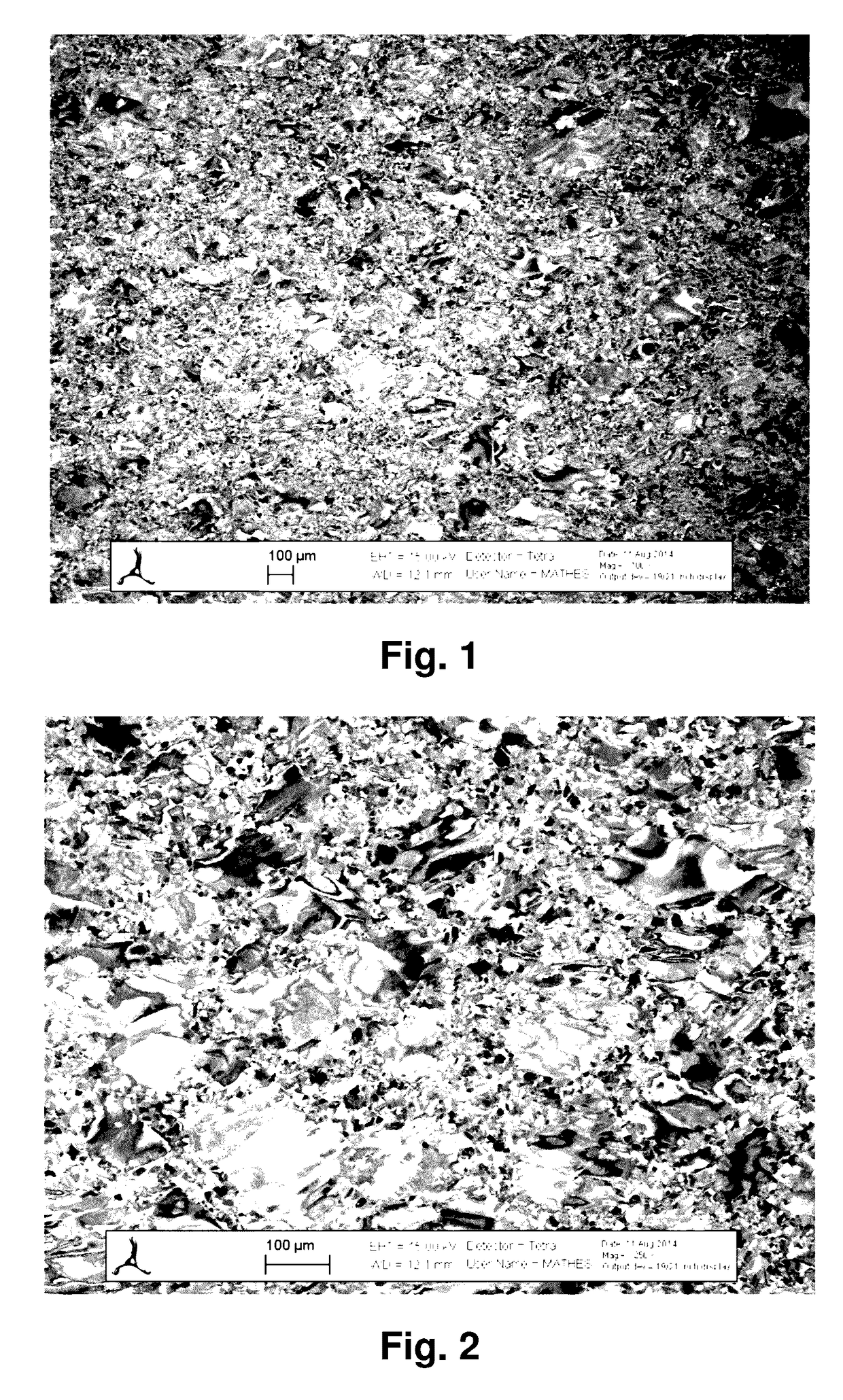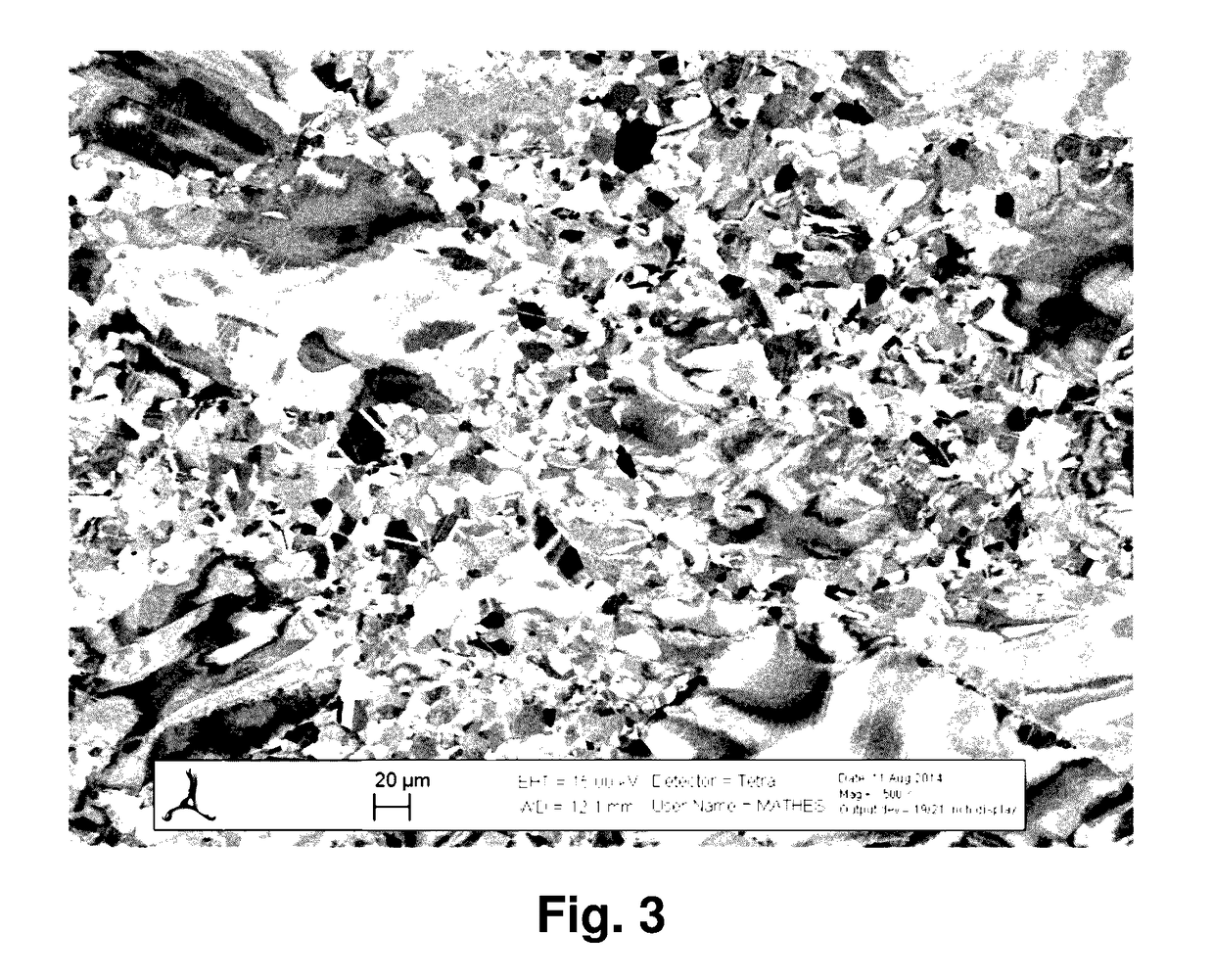Processes for producing low nitrogen essentially nitride-free chromium and chromium plus niobium-containing nickel-based alloys and the resulting chromium and nickel-based alloys
a technology of chromium and nickel-based alloys, which is applied in the field of low nitrogen production, can solve the problems of high cost, high cost, and inability to obtain low nitrogen chromium-containing nickel-based superalloys, and achieve the effects of low cost, high cost and slow production speed
- Summary
- Abstract
- Description
- Claims
- Application Information
AI Technical Summary
Benefits of technology
Problems solved by technology
Method used
Image
Examples
example 1
[0042]An original charge consisting of low nitrogen solubility elements: 38.70 kg nickel, 13.5 kg iron, and 2.30 kg molybdenum was loaded into an aluminum oxide / magnesium oxide crucible situated within a vacuum induction melting furnace. The pressure within the system was evacuated to below 0.1 mbar and the power was turned on. After the charge was completely melted, the temperature was raised to 1450° C. A carbon boil was initiated by adding 20 grams of pure graphite to the molten metal. After the boil subsided, the temperature of the molten charge was raised to 1534° C. and tapped into a mold wherein it was allowed to solidify and cool until it could be safely handled.
[0043]Separately, chromium oxide, aluminum powder, together with KClO4 were admixed within a vacuum vessel to form a thermite mixture. The thermite mixture was vacuum degassed until the system achieved a pressure below 1 mbar. The pressure within the system was then raised to 200 mbar by introduction of argon. The th...
example 2
[0046]In the same manner as set forth in Example 1, an original charge consisting of 38.7 kg nickel, 13.5 kg iron and 2.30 kg molybdenum was loaded into an aluminum oxide / magnesium oxide crucible situated within a vacuum induction melting furnace. The pressure within the system was evacuated to a pressure below 0.1 mbar and then the power was turned on. After complete melt down, the temperature was raised to 1460° C. A carbon boil was initiated by adding 20 grams of pure graphite to the molten metal mixture. After the boil subsided, the temperature of the molten charge was raised to 1495° C. and tapped into a mold wherein it was allowed to solidify and cool until it could be safely handled.
[0047]Separately, chromium oxide, aluminum powder, and KClO4 were admixed within a vacuum vessel, as described herein, to form a thermite mixture. The thermite mixture was vacuum degassed until the system achieved a pressure below 1 mbar, then the system pressure was raised between 100-200 mbar by...
PUM
| Property | Measurement | Unit |
|---|---|---|
| pressure | aaaaa | aaaaa |
| pressure | aaaaa | aaaaa |
| temperature | aaaaa | aaaaa |
Abstract
Description
Claims
Application Information
 Login to View More
Login to View More - R&D
- Intellectual Property
- Life Sciences
- Materials
- Tech Scout
- Unparalleled Data Quality
- Higher Quality Content
- 60% Fewer Hallucinations
Browse by: Latest US Patents, China's latest patents, Technical Efficacy Thesaurus, Application Domain, Technology Topic, Popular Technical Reports.
© 2025 PatSnap. All rights reserved.Legal|Privacy policy|Modern Slavery Act Transparency Statement|Sitemap|About US| Contact US: help@patsnap.com



